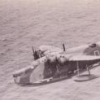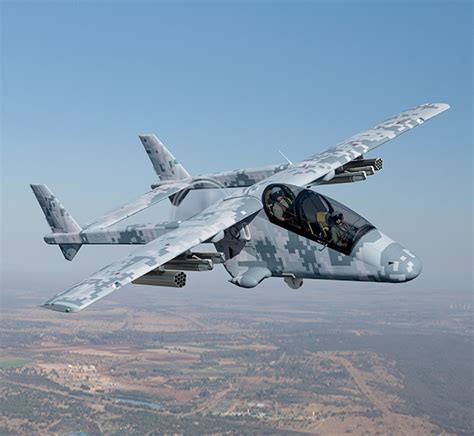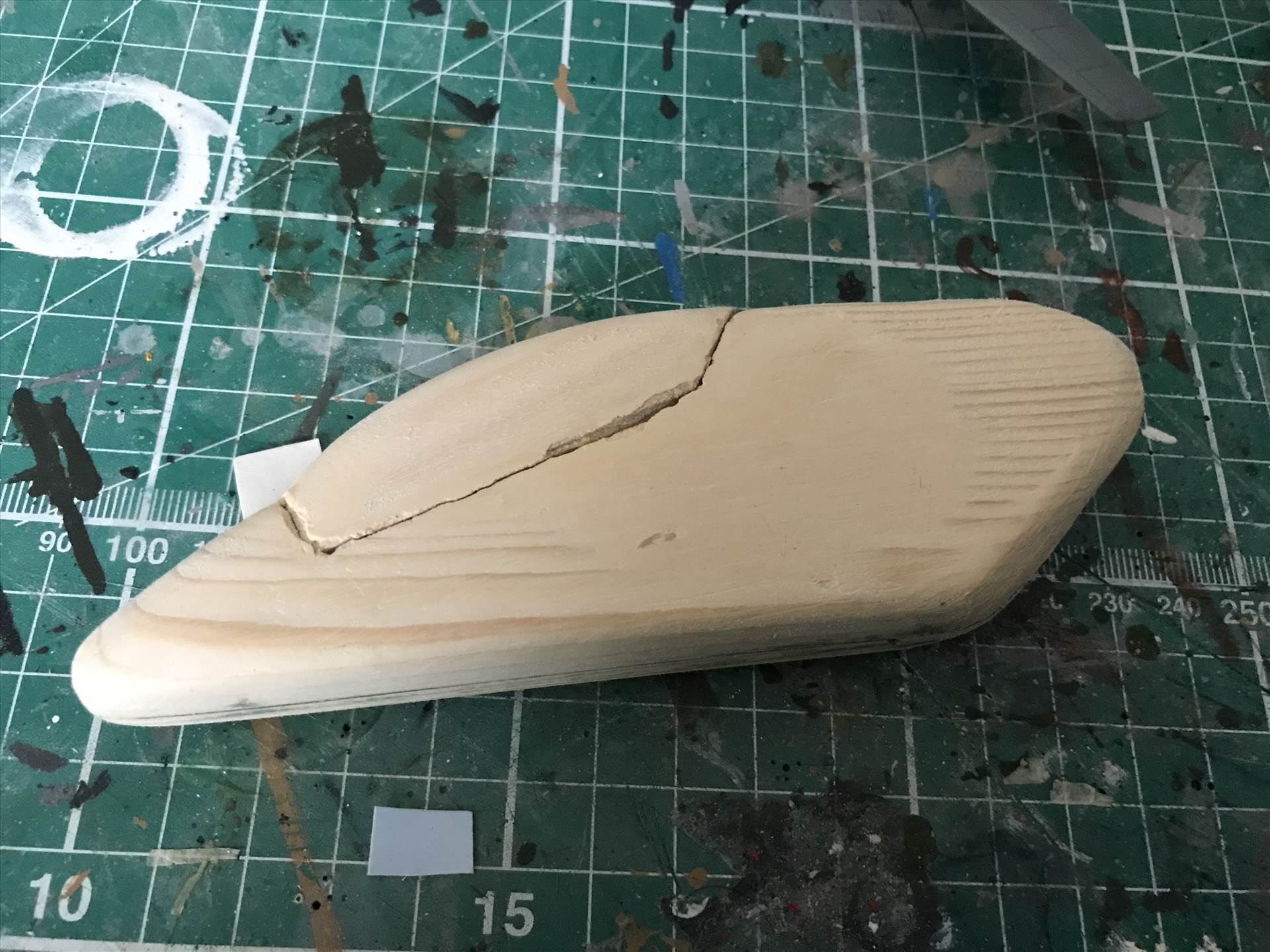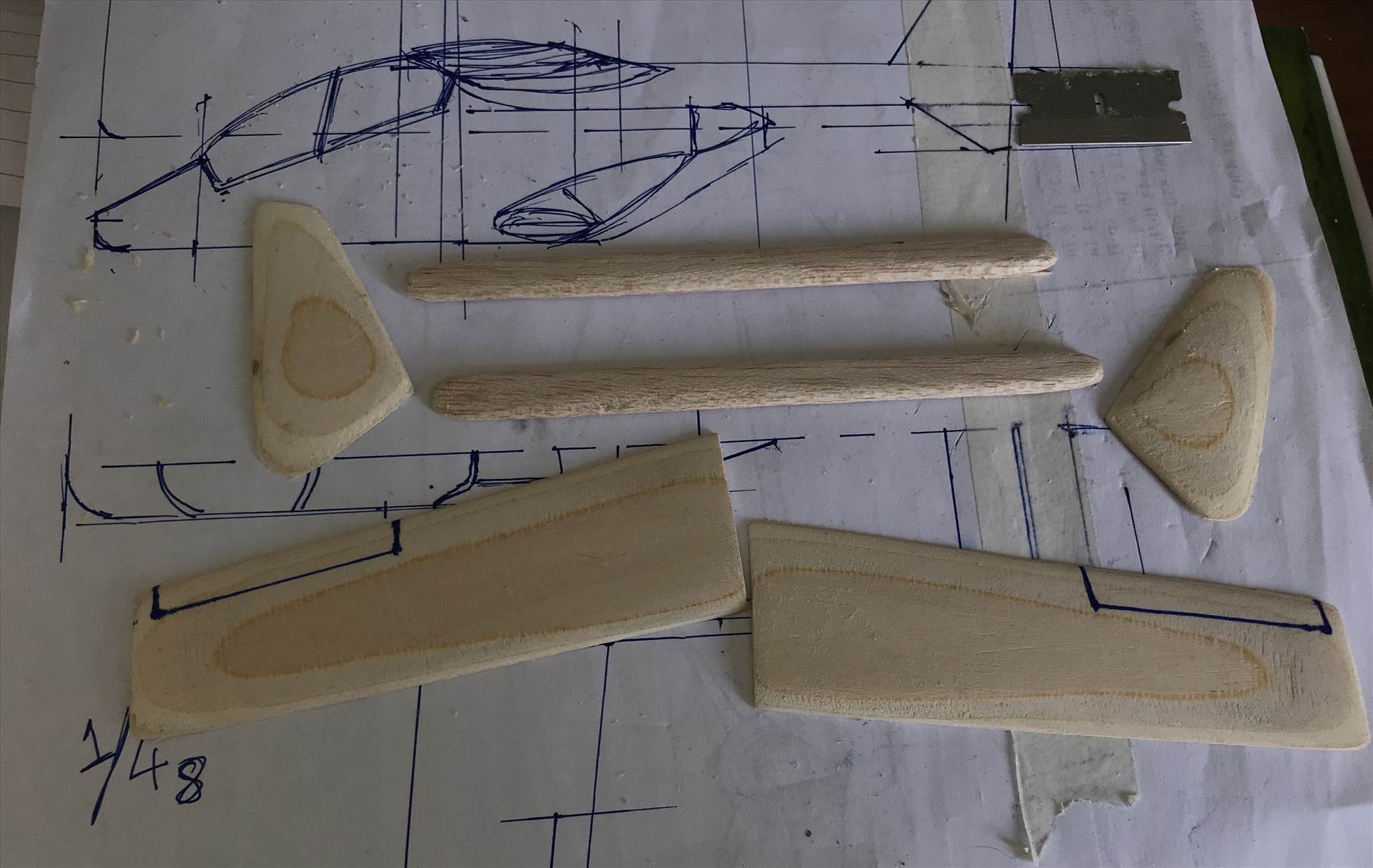-
Posts
617 -
Joined
-
Last visited
Content Type
Events
Profiles
Forums
Media Demo
Posts posted by Nachtwulf
-
-
I have to say that you've done a wonderful job with that! I am captivated by the look of the Sycamore. To me it has such a biomechanical insect look to it that I can't seem to look away! Well done!
-
 1
1
-
-
Reminds me of the models airmen would make who were in a prisoner of war camp. Very cool!!
-
 3
3
-
-
On 9/3/2021 at 12:11 PM, Marklo said:
I agree the trick with scratchbuilding is to break objects down into simple shapes that can be fabricated and assembled to get the desired object. Now I must admit I mostly scratch early aircraft and they tend to be much simpler shapes. But with practice even the most modern planes can be broken down into simpler shapes e.g the Ahrlac I’m currently working on.
Thus this breaks down..
Into this
And this.
Looks like a modernized OV-10 Bronco!
-
Combine them all into a MeJu 459.
-
 2
2
-
-
Though probably not related to Series 1 vs Series 2, another change is the wingtip lights. At some point they went from clear lenses with colored bulbs to colored lenses with clear bulbs. You would have to check reference photos for any particular aircraft as I am unsure when the change took place. Could have been a maintenance depot change as well.
-
 1
1
-
 1
1
-
-
Did the Sea fury have any offset to the vertical tail plane to counter torque?..and if it did, does that mean it had to be changed when some of the privately owned aircraft switched over to the R-2800?
-
My observations, I don't know diddly about the colors. I do think that most of the holes in fuselage were made with and axe and or pick. Bullets or cannon shells usually don't make square holes, but I wasn't there so it's just my opinion which is essentially worthless. I had to write something.

Edit: Yeah, it made more sense when I wrote it. Upon further inspection it looks like some of the holes were made with a knife possibly from souvenir hunters?
-
 1
1
-
-
Excellent build and photography! That plane looks like it was designed to have ordinance slung under the wings.
-
 1
1
-
-
I would be thrilled to have that sitting on my shelf! Very nice!
-
8 hours ago, Jamie @ Sovereign Hobbies said:
At the risk of muddying the waters, there isn't a straight forward answer to this. The characteristics of different aerofoil sections are all different and what may appear to be a geometric chord line isn't necessarily the aerodynamic one, and by that I mean there are numerous aerofoil sections which still provide positive lift with the geometric angle of incidence negative by a couple of degrees. Add in to this the fact that to make stall characteristics of the whole aircraft better, many straight wings will have either geometric washout (i.e. a physical twist along the span placing the tips at a lower geometric incidence than the roots so the root will ten..............For that reason it's tricky to draw a red line through most illustrations of aircraft and determine much that's definitive - you need the real datum lines the designers worked to which they write down in the engineering manuals for the maintenance engineers to work to.
Agreed- though off the top of my head I can't remember whether there are any four engine WWII birds that did have washout. I always assumed it was more suited to fighters since they are doing much more extreme maneuvers and the purpose of the washout was to delay airflow from separating from the control surface portion of the wing last. Two of the most obvious fighters with washout are the P-47 and the Ta152. In the end everything I've stated here is factual only in my head and is not backed up by anything more than my own suppositions and faulty observations. Don't provoke me though, as I may resort to posting a picture of a P-40 with as many red lines..........oh who am I kidding? It took me almost half an hour to draw two fat red lines on a four engine patrol plane.
 I'll get my coat
I'll get my coat 
After reading more on washout (Hat tip to the guy that invented reading. It actually works! Who knew?) I have come to the conclusion that I don't know near as much as my ego says I do. Is there an Ego removal kit available? I'll take the cheap one.......
-
 2
2
-
-
On 7/19/2021 at 9:13 AM, Graham Boak said:
Being perpendicular (i.e. at 90 degrees) to the wing chord? Odd sort of tailplane. Do you mean the vertical stabiliser (i,.e. fin and rudder)? Plus I don't believe you can actually make out the wing chord line anyway. Tailplanes are usually set at a negative angle to the flightpath. The whole arrangement seems very odd. It seems to have worked.
Yeah, I meant the Vertical stab not horizontal...

-
 1
1
-
-
1 hour ago, Graham Boak said:
Being perpendicular (i.e. at 90 degrees) to the wing chord? Odd sort of tailplane. Do you mean the vertical stabiliser (i,.e. fin and rudder)? Plus I don't believe you can actually make out the wing chord line anyway. Tailplanes are usually set at a negative angle to the flightpath. The whole arrangement seems very odd. It seems to have worked.

My very first "red lines" post! be gentle.

-
 1
1
-
 1
1
-
 2
2
-
-
On 7/16/2021 at 7:01 AM, JWM said:
It appears to me that the
horizontalvertical stab is exactly perpendicular to the wing chord line. It does look like it is at an angle compared to the fuselage.Edit: It looks like the same could be true of the B-24.
-
 1
1
-
 1
1
-
-
looks like a single engine YF-23 to me.
-
Oh,that is pretty! Now I will have to poorly replicate that using my meager skills. Well done!

-
 1
1
-
-
4 hours ago, GiampieroSilvestri said:
The aircraft in the picture is the Focke Wulf Fw 190 V53 Werknummer 170003 stammkennzeichen DU+JC which was a Focke Wulf Fw 190 D-9 converted from a Fw 190 A-8.The same picture is in the model art (?) book about the Fw 190 D-9-Ta 152.
Saluti
Giampiero
But weren't the inner gear doors eliminated around the time the Fw190-A5 came around?
-
The first AN-2 I ever saw was in the mid 90's at Travis AFB CA. I remember it well because of the metal bucket placed under the engine while it sat on the ramp to catch all the oil that was leaking from the engine. Fun Plane to watch lumber into the air.
-
 1
1
-
-
Absolutely brilliant! You nailed the paint job and weathering!

-
 1
1
-
-
Excellent! Love the paint work!

-
 1
1
-
-
Sorry. I missed the second link. I see what you mean now.

-
 1
1
-
-
2 hours ago, Tbolt said:
True and I was getting my RAF colours mixed up, I meant to say MSG as it does look quite light on Teddy. Though this photo is interesting as the grey looks darker ( like on Josephine http://147084544c678448852d-ddcc53207dce6036b290906311a424f9.r57.cf3.rackcdn.com/rfc/FRE_005542.jpg ) but look at the wing of the P-47 the picture is taken from, the colour is a lot lighter. Did they use different greys depending on what was available?
http://147084544c678448852d-ddcc53207dce6036b290906311a424f9.r57.cf3.rackcdn.com/rfc/FRE_005580.jpg
I believe what you are referring to on the wing leading edge is actually natural metal. Also note worthy: The Tamiya P-47M might be a good place to start for a reference regarding the dark color .
-
By the time the D-28 was seeing action all P-47D's were delivered in natural metal if I remember correctly. Olive drab and Neutral gray were no longer required for delivery. So that means we are talking about a field applied scheme or depot applied at best. "Teddy" appears to have natural metal canopy frame which, to me , would preclude it being delivered in O.D./neutral gray. Now you are getting into which paints were available in theater. That does not in any way look close to O.D./Neutral gray/natural metal. I can see the natural metal for the undersides, although how much was left unpainted is hard to tell.
If it were my model I would probably pick from some British colors to get as close as I could.
-
 2
2
-
-
-
3 hours ago, Graham Boak said:
Well, it's all understanding flows according to Bernoulli at base, but a very different treatment. F1 are looking for low pressures creating a force at right angles to the flow, sucking the car down. Like using a venturi tube to create a vacuum to operate instruments. Clustering the exits at the side of the engine/fuselage interface is about filling an area of low pressure (where the engine is wider than the fuselage) to stop/reduce drag against the direction of travel. The actual flow past the engine is another involved matter, which doesn't involve directly drag but does affect cooling. Similarly what is called the Meredith effect in Spitfire/Me.109/Mustang radiators - and more - involving convergent/divergent ducts and here boosting the energy of the exit flows. All use of the same principles but in different manners for different purposes. There's a lot more aerodynamics going on inside the outer shape than is often recognised.
Wait...... are you telling me that they didn't just design it to look cool?










FW-190 A Help Please
in Aircraft WWII
Posted
Pacific Coast Models released a 1/32 Fw190 A-1 through A-3
http://mail.hyperscale.com/2018/reviews/kits/pcm32011reviewbg_1.htm
If the picture above is the aircraft in question then it most likely an A-2 or A-3 as the A-4 had louvers replacing the cowl slots. Unless there was some cross over for very early -4s.